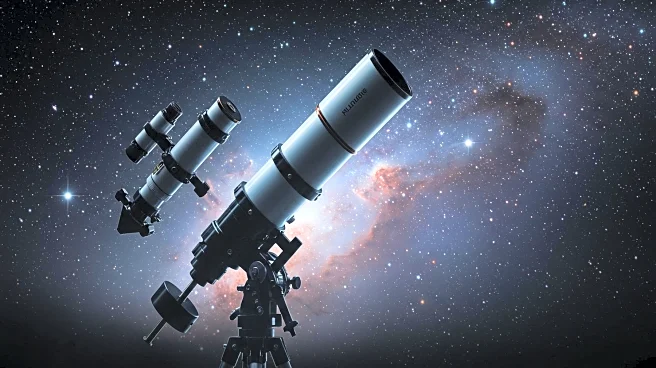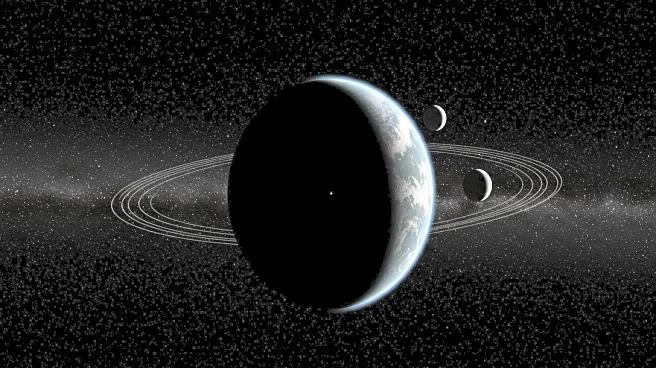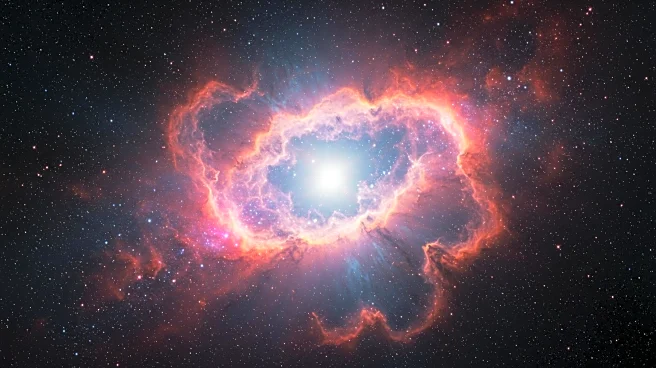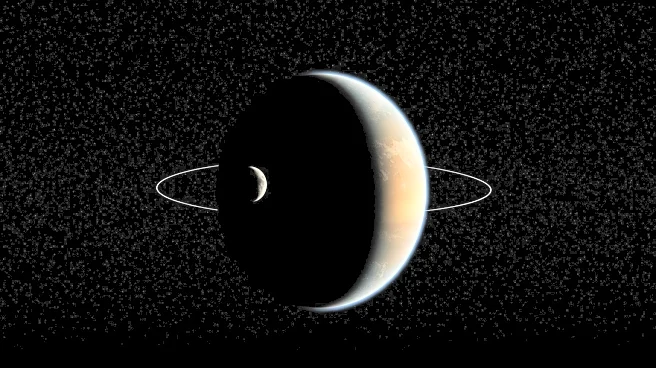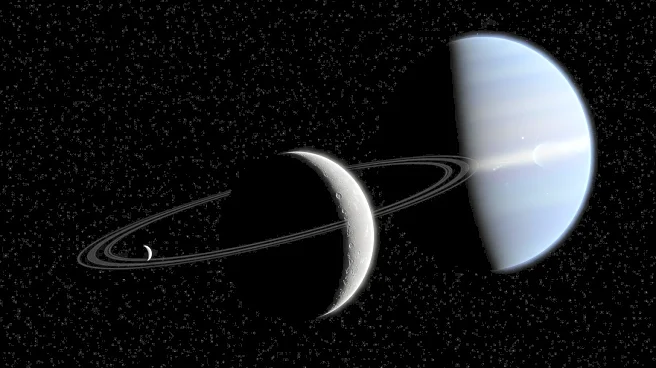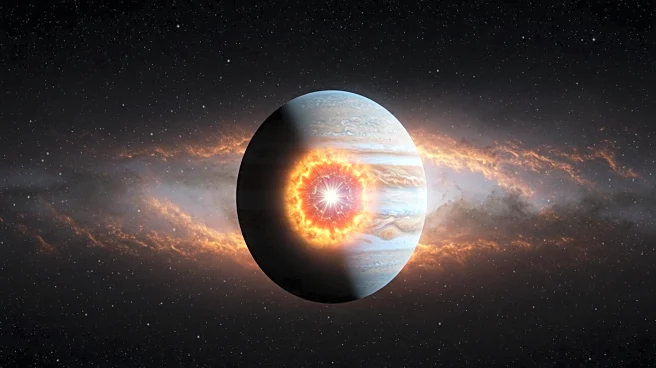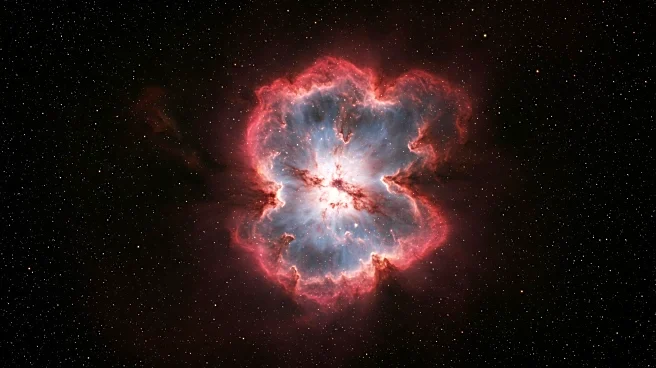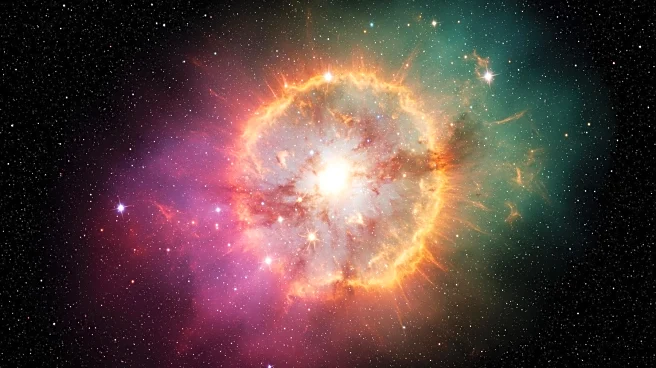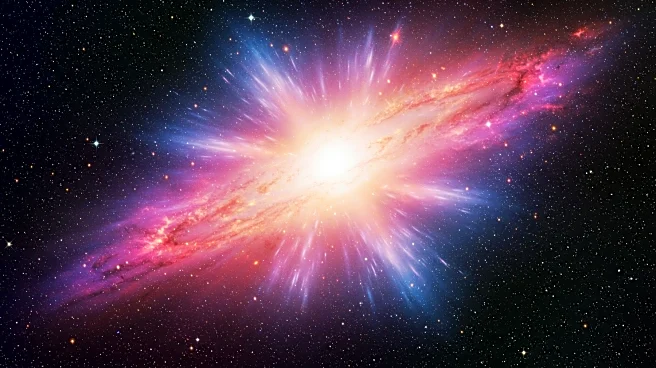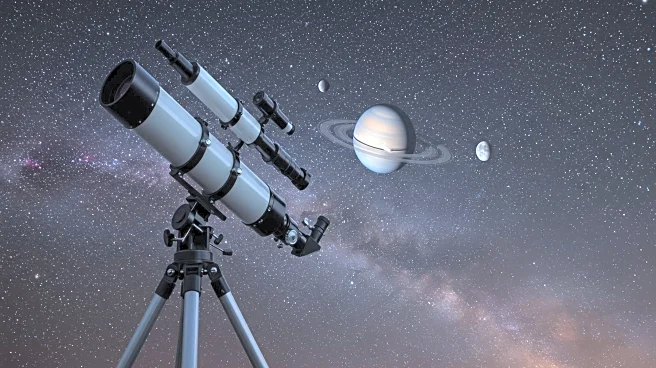What is the story about?
What's Happening?
Researchers at the University of Missouri, utilizing NASA's James Webb Space Telescope (JWST), have identified 300 objects that may represent early galaxies in the universe. These objects, detected through infrared imaging, shine more brightly than expected, suggesting they could be among the first galaxies formed. The study, led by astronomy professor Haojing Yan and Ph.D. student Bangzheng 'Tom' Sun, employs a method known as the dropout technique to identify high-redshift galaxies. This technique involves detecting objects that appear in redder wavelengths but disappear in bluer ones, indicating their light has traveled vast distances. The findings could challenge existing theories about galaxy formation if these objects are confirmed to be early galaxies.
Why It's Important?
The discovery of these potential early galaxies could significantly impact our understanding of the universe's formation. If confirmed, these objects may require scientists to revise current models of how galaxies formed and evolved. This could lead to new insights into the conditions of the early universe and the processes that led to the creation of stars and galaxies. The research highlights the capabilities of the JWST in exploring distant cosmic phenomena and underscores the importance of advanced astronomical tools in expanding our knowledge of the universe.
What's Next?
The next step for researchers is to confirm the nature of these objects using spectroscopy, which can provide detailed information about their composition and age. Spectroscopy will help determine whether these objects are indeed early galaxies or something else. The confirmation of even a few of these objects as early galaxies would necessitate a reevaluation of current galaxy formation theories. Further studies and observations will be crucial in understanding the implications of this discovery.
Beyond the Headlines
This discovery also raises questions about the methods used to identify and classify distant cosmic objects. The potential need to revise galaxy formation theories could influence future research directions and funding priorities in astrophysics. Additionally, the findings may inspire new technological advancements in telescope design and data analysis techniques to better explore the universe's early history.
AI Generated Content
Do you find this article useful?
